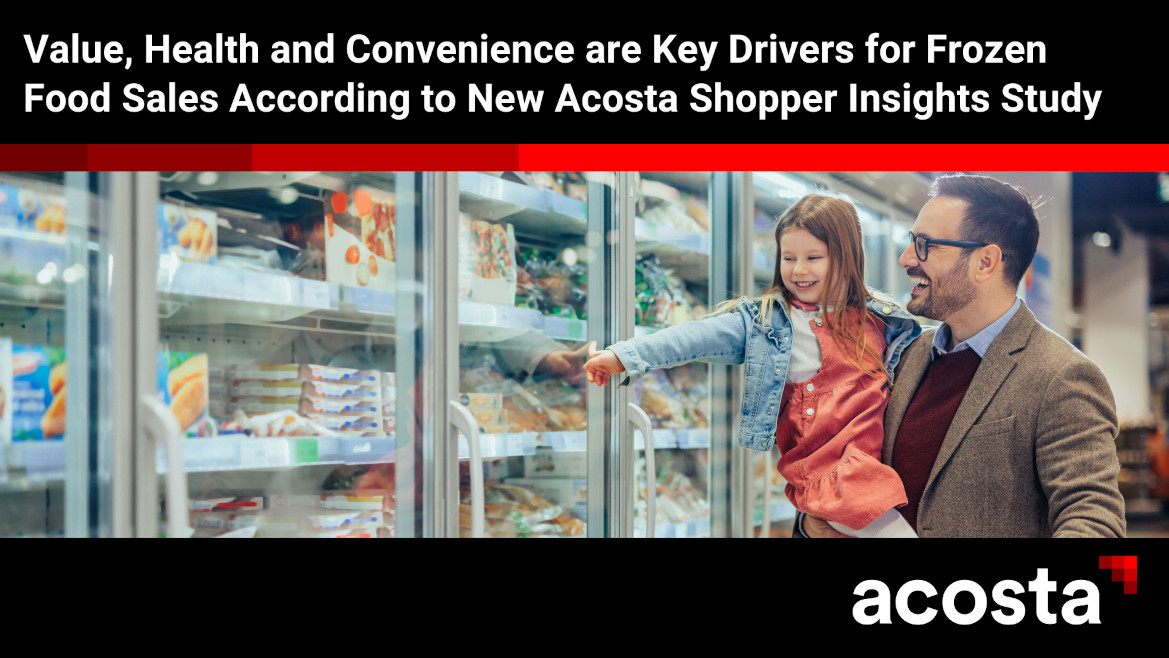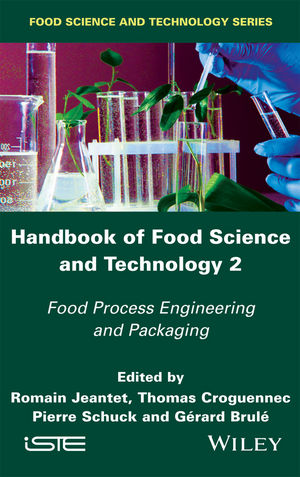Acosta, a global integrated sales and marketing services provider, released its new Frozen Food Trends & Insights study in conjunction with this week’s National Frozen & Refrigerated Foods Convention.
With price top of mind for consumers, frozen food sales have exceeded $70 billion over the past year, according to NielsenIQ – a 7.6% increase over 2021, and 31% increase over 2019 pre-pandemic sales. According to the research, there are three key drivers for consumers’ frozen food purchases this year: value, convenience and healthy options. Comfort weighs in as an ancillary driver to purchase.
“Two years ago, our research attributed frozen food sales growth predominantly to the pandemic and the resulting evolution of consumer demand with more people cooking at home,” said Kathy Risch, SVP, Consumer Insights and Trends at Acosta. “Today, even as the average unit price for frozen products has risen 15% over 2021, consumers continue to select frozen as a key part of their food shopping experience,” she stated. “We’ve found that criteria for purchase are balanced between the requirements of affordability and value, healthy choices that meet dietary or lifestyle needs, convenience of preparation and a bit of comfort.”
With 98% of households purchasing frozen foods, 86% of those shoppers are visiting the frozen section on all or most of their grocery visits. Innovation is driving flavorful options to meet multiple dietary needs and lifestyle choices with numerous new entries taking key positions on freezer shelves. There are ongoing opportunities for manufacturers and retailers to influence purchase decisions.
Key findings include:
- 67% of consumers believe that frozen sometimes provides a better value than non-frozen, listing the categories of vegetables, fruit, meat, fish and pizza.
- 93% of shoppers are noticing higher prices on frozen foods and 40% of shoppers are spending more time looking for deals.
- Shopping for frozen foods at club stores has jumped 5% this year, with 52% of households reporting they’re buying in bulk to save money.
Understanding frozen foods shopping habits:
- 91% purchased desserts – comfort, convenience and indulgence.
- 89% purchased prepared foods and 59% of consumers had a frozen main dish recently as a replacement for eating outside the home.
- 75% purchased vegetables, as frozen vegetables are often perceived as “healthier” than fresh, and a better value.
- 72% said frozen purchases are planned vs. impulse.
- Consumers continue to prefer purchasing frozen foods in-store vs. online, citing handling concerns and preference to select as the key barriers.
Insights for manufacturers and retailers include:
- Clearly communicate the value proposition of frozen foods, especially bulk items and entrees that help shoppers stretch dollars, with clear marketing and packaging.
- Frozen foods are undergoing a health-centric rebrand – educate consumers on the healthy nutritional content preserved in frozen foods and continue to elevate options with healthier innovation, such as plant-based options.
- Highlight the convenience of meal solutions and communicate dinner meal solutions that mix and match frozen with fresh items.
- Strengthen the freezer section shopping experience to make it more fun, enjoyable and engaging.
“There is an opportunity to do more to engage with customers and drive excitement and purchase in the frozen section, in-store and online, through targeted omnichannel marketing, sales promotions and experiential retailing. Understanding the consumer mindset in frozen will play an important role in supporting anticipated growth and driving purchase decisions,” said Risch.
About Acosta
Acosta’s suite of progressive, commerce-centric solutions enables today’s biggest brands, retailers and foodservice providers to win in the modern marketplace. Since 1927, Acosta has developed trusted relationships and unmatched scale. In a complex and fast-evolving omnichannel world, Acosta’s network of companies allows us to connect with shoppers wherever they are. Through data-backed growth strategies and exceptional customer experiences, we are connecting tomorrow’s commerce today.






